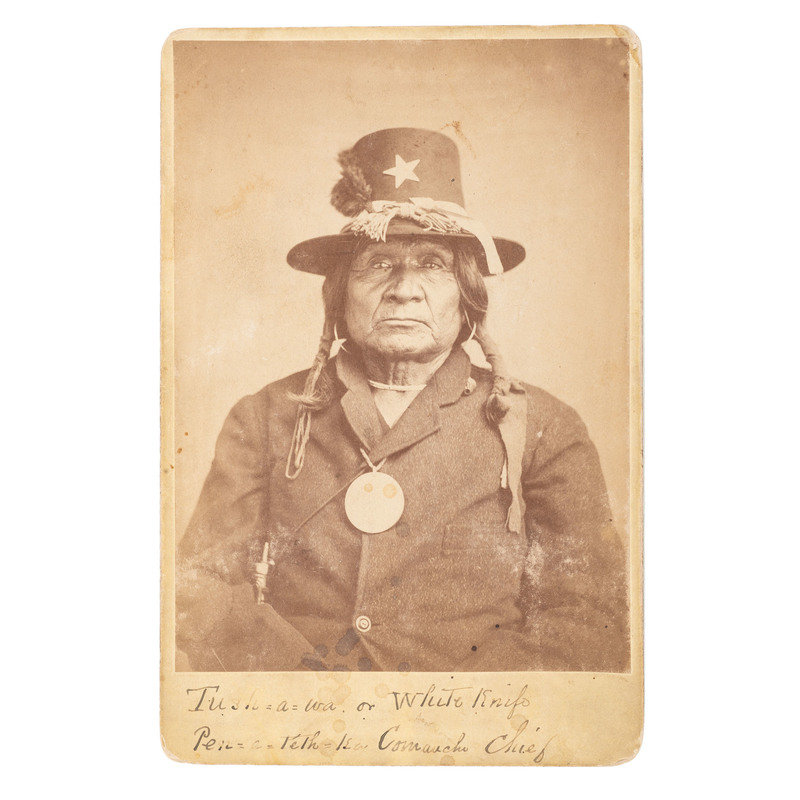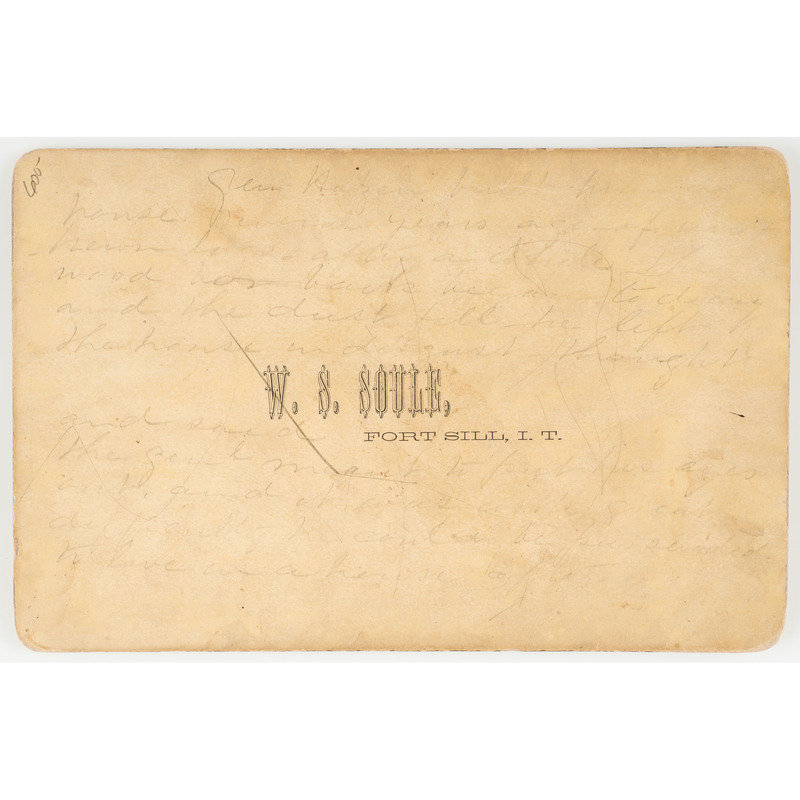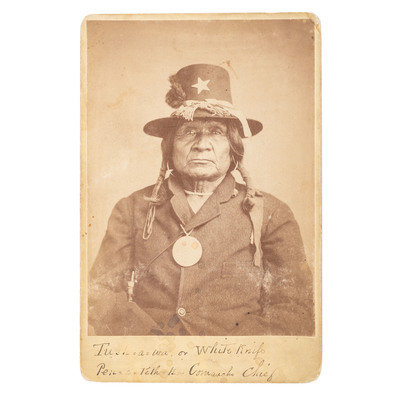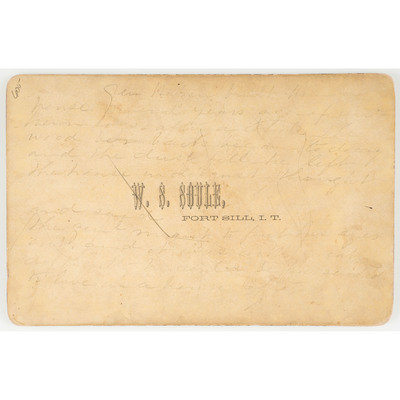Lot 276
Cabinet card featuring Penateka Comanche chief Tosawa (spelled variously), or White Knife, with W.S. Soule, Fort Sill, Indian Territory imprint on verso and inscription reading, "Tush=a=wa or White Knife / Pen=a=Teth=ka Comanche Chief," on mount. Tosawa wears a dressed Hardee hat, and an unidentifiable medal around his neck. Additional pencil inscription on mount tells a cryptic and difficult-to-read story about (likely) William Babcock Hazen, referred to as "Gen Hazen" in the inscription. The story refers to a house built with decaying logs. It reads, in part, "Gen Hazen built [indecipherable] / house several years ago of [indecipherable] / hewn logs. after a while the / wood [indecipherable] back began to decay / and the dust fell. he left / the house in disgust...it was with great / difficulty he could be persuaded / to live in a house after."
Tosawa, known by many as a peaceful chief of the Penateka Comanche tribe, was one of the signers the Treaty of Tehuacana Creek in 1846 and, along with other Comanche chiefs, met CSA General Albert Pike at Fort Cobb to swear allegiance to the Confederacy. Though he engaged in raids on southwestern America during the 1860s, he eventually returned to Fort Cobb and acquiesced to military authority during the latter part of the decade. It was at Fort Cobb that an alleged interaction between Tosawa and Philip Sheridan took place, in which Sheridan is supposed to have uttered the notorious statement commonly paraphrased: "The only good Indian is a dead Indian." Tosawa is also credited with keeping his people out of the Red River War of 1873-1874, further bolstering his image as a peaceful chief. Notably, in Richard Henry Pratt's Battlefield and Classroom: Four Decades with the American Indian, 1867-1904, he writes that General W.B. Hazen (the man likely referred to in the pencil inscription on card verso) was appointed in charge of a temporary Indian Agency at Fort Cobb where "friendly" nomad Indians were asked to assemble. In a footnote, Pratt writes, "...the Penateka Comanches of Tosawi and AsaHavey were cooperative."



